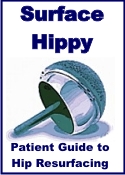The Smith & Nephew Accuris Uni Knee Replacement
What is partial knee replacement?
When you and your physician have exhausted all non-surgical measures for treating your knee problems, you may be a candidate for minimally invasive partial knee replacement. Often called uni knee replacement, partial knee replacement is an option for patients with knee arthritis that is isolated to either the inside or outside compartment of the knee.
The purpose of partial knee replacement is to remove the damaged and worn compartment of the knee joint and replace it with smooth, artificial implants called prostheses, which will help you make your knee strong, stable and flexible again.
The implant
Some questions you are probably thinking about are: what kind of implant device you will be receiving, what is it made of, and why is your surgeon using a particular kind of device? If you haven't discussed this with your surgeon, you should, because not all partial knee implant devices are made of the same material.

Accuris Uni Knee by Smith & Nehpew
The partial knee implant is comprised of a femoral
(thighbone) component and a metal and plastic tibial (shinbone) component. The
femoral component is fitted into the area of the thighbone at the knee joint
where the loose bone and cartilage has been removed. The tibial component is
then fitted in the shinbone at the knee joint where worn out bone and cartilage
has also been removed.
What is the Smith & Nephew ACCURIS Uni Knee?
It is a knee-replacement procedure using ground-breaking
instrumentation for minimally invasive knee-replacement surgery. This refined
instrumentation allows for an accurate and reproducable surgery, and for perhaps
the first time, allows surgeons to consider a uni knee replacement for a
significant portion of the the patient community. The uni knee is a partial knee
replacement that allows a surgeon to preserve healthy bone in the knee.
It is a knee-replacement procedure using ground-breaking instrumentation for
minimally invasive knee-replacement surgery. This refined instrumentation allows
for an accurate and reproducable surgery, and for perhaps the first time, allows
surgeons to consider a uni knee replacement for a significant portion of the the
patient community. The uni knee is a partial knee replacement that allows a
surgeon to preserve healthy bone in the knee.
The instrumentation resurfaces the diseased bone to the shape
of the implant. This means less bone is actually removed in the surgery. The
instrumentation makes this a very accurate procedure, one that is reproducible
and offers the surgeon and the patient a great alternative to total knee
surgery. The instrumentation resurfaces the diseased bone to the shape of the
implant. This means less bone is actually removed in the surgery. The
instrumentation makes this a very accurate procedure, one that is reproducible
and offers the surgeon and the patient a great alternative to total knee
surgery. There is less time in the operating room, less time in the hospital,
possible out-patient surgery, and less time in rehabilitation increase physician
and hospital efficiency and result in lower costs to the health-care system.
Using the uni knee means a shorter hospital stay (1-2 days compared to 3-4 days
in the hospital and 2 days in a rehab center) and shorter time under anesthetic
(40 minutes as opposed to up to two hours for total knee replacement). Smaller
incision (3-4 inches rather than 12-16 inches) Less pain and shorter recovery
time. Knees repaired with the uni knee technology are weight bearing immediately
after surgery. Rehab time is reduced to 6-8 weeks instead of the usual 6 months
for total knee replacement. Uni knee recipients have a greater range of motion
after surgery. The uni knee surgery replaces only the damaged part of the knee,
thus preserving healthy bone. Precise instrumentation ensures accuracy of the
cut of the bone. The procedures maintains the ligaments and at the same time
corrects the deformity. The procedure also maintains the anterior cruciate
ligament.
Uni knee recipients have a greater range of motion after surgery. The uni knee
surgery replaces only the damaged part of the knee, thus preserving healthy
bone. Precise instrumentation ensures accuracy of the cut of the bone. The
procedures maintains the ligaments and at the same time corrects the deformity.



